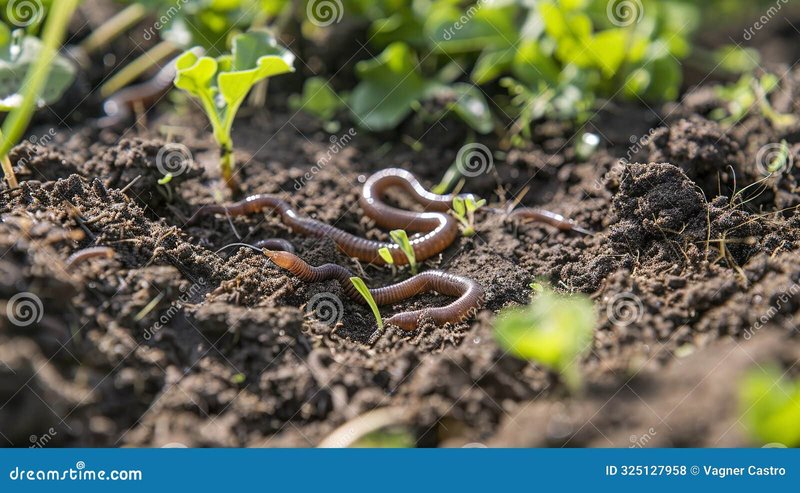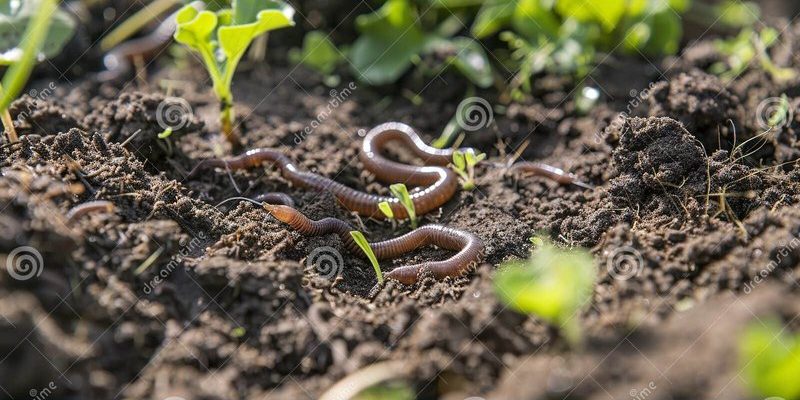
Imagine your garden as a bustling city. The earthworms are the workers, busy all day, breaking down waste and aerating the soil. Without them, the city would fall apart! In this article, we’ll dive into what makes the perfect environment for our squirmy friends. Whether you’re a seasoned gardener or just starting out, knowing how to create the best soil conditions for healthy earthworm populations will help your garden flourish.
What Do Earthworms Need to Thrive?
Earthworms are sensitive creatures, and their survival hinges on a few key factors. First up, they need *moisture*. Imagine trying to breathe in a dry desert—sounds tough, right? Earthworms breathe through their skin, and if the soil is too dry, they can’t absorb enough oxygen. Ideally, your soil should be moist but not waterlogged. A good rule of thumb is to keep it damp like a well-watered sponge.
Another essential factor is *pH levels*. Earthworms prefer slightly acidic to neutral pH, generally between 6.0 and 7.5. Think of soil pH like the seasoning in your food: too much or too little can ruin the whole dish. If your soil is too acidic or too alkaline, it can hinder earthworm populations. A simple pH test kit can help you determine your soil’s acidity and make necessary adjustments.
Lastly, earthworms thrive in organic-rich soil. That means incorporating *compost* or well-rotted manure can do wonders. Think of organic matter as a five-star buffet for earthworms. They’ll come flocking to dine on decaying leaves, plant material, and other organic goodies. In turn, they’ll help break it down into rich soil for your plants—talk about a win-win!
The Importance of Soil Texture
Soil texture is another player in the earthworm game. It refers to the size and composition of soil particles—clay, silt, and sand are the primary types. Imagine trying to walk across a muddy field versus a sandy beach. That’s how texture affects earthworms!
Earthworms prefer *loamy* soil, a mix of sand, silt, and clay that holds moisture but also drains well. Loamy soil is like a comfy blanket for earthworms—it’s easy for them to move around, and they have ample access to food sources. If your garden soil is mostly clay, that can make it hard for worms to survive. Clay is dense and can hold too much water, making it a soggy mess. On the flip side, sandy soil drains quickly and might not retain moisture, leaving earthworms parched.
To improve soil texture, consider *amending* it with organic matter. Adding compost or aged manure can transform heavy clay into a more loamy mix. Just like giving someone a comfy chair to sit in, you’re creating a cozy home for those earthworms!
Managing Soil Moisture Levels
Soil moisture is crucial to supporting earthworm populations. Too much water can drown them, while too little can lead to dehydration. So how do you find the sweet spot?
Start by checking drainage in your garden. If you’ve got areas that pond after a rainstorm, you might need to *improve drainage*. This can be done by incorporating organic materials into the soil or building raised garden beds that allow better water escape.
On the other hand, if your soil tends to dry out quickly, you’ll have to ensure consistent watering, especially during hot months. Adding organic mulch can help retain moisture, similar to how a thick blanket keeps you warm in winter. If you’re in a particularly dry climate, consider using drip irrigation to deliver just the right amount of water directly to the soil.
And don’t forget to do the “squeeze test”! Take a handful of soil, squeeze it in your palm, and open your hand. If it holds together but doesn’t drip water, you’re on the right track. If it’s a soggy mess, cut back on watering. If it falls apart, it’s time to add some moisture.
The Role of Organic Matter in Soil
Organic matter is like the VIP pass for earthworms. It’s essential for their survival and helps maintain healthy soil conditions. When you add organic materials like *compost, leaf litter,* or *grass clippings* to your garden, you’re providing the food source earthworms crave.
As these materials break down, they improve soil structure, allowing air and water to penetrate more easily. That’s like giving earthworms an express lane through the garden! As they feast on this organic material, they also produce *vermicast*, which is enriched in nutrients that plants love. You get a beautiful garden and happy earthworms—all from a little composting effort.
Incorporating organic matter isn’t just a one-time deal, though. To keep the benefits flowing, aim to add a layer of organic material every year. This ongoing feeding keeps the earthworm population strong and thriving, creating a robust ecosystem right beneath your feet.
Encouraging a Diverse Soil Ecosystem
Just like a diverse city is more vibrant, a diverse soil ecosystem fosters healthier earthworm populations. Different organisms like *bacteria, fungi,* and *microorganisms* work together to create a balanced environment. These organisms help break down organic matter, making nutrients available for your plants, and oh, you guessed it, feeding earthworms in the process!
To encourage this diversity, avoid using harsh chemicals or pesticides in your garden. Think about it: it’s like throwing a party and then asking half the guests to leave because they’re not your favorites. Instead, focus on *natural fertilizers* and pest control methods. You can introduce beneficial insects or use companion planting to deter pests naturally.
Another way to promote diversity is by planting a variety of plants. Different species attract different soil organisms, enriching the ecosystem. This variety ensures your garden is a bustling, lively place for earthworms and other creatures to thrive.
Protecting Earthworms from Disturbance
While it’s great to work in your garden, it’s essential to approach it with care. Certain practices can disturb the earthworm population. For instance, frequent tilling can disrupt their habitat and even kill them. To protect these essential workers, consider minimizing tillage or using no-till gardening techniques.
Instead of turning the soil, focus on gently incorporating organic matter into the top layer. This approach preserves the existing earthworm populations while enriching the soil. You might also want to create designated paths for walking in your garden to reduce soil compaction. Compacted soil can suffocate earthworms and reduce their ability to move freely.
Additionally, when you do need to disturb the soil, like during planting or harvesting, try to limit the area you work on. It’s like gently tiptoeing through a sleeping town rather than stomping through with heavy boots. Keep those earthworms safe, and they’ll reward you with healthier soil!
Creating the best soil conditions for healthy earthworm populations is a rewarding journey. Remember, these little creatures are not just squirmy nuisances; they are crucial players in the health of your garden. By focusing on moisture levels, soil texture, organic matter, and minimizing disturbances, you’ll help your earthworm friends thrive.
As you nurture your garden, keep an eye on the soil condition. Each tiny change can have a profound impact on your earthworm population and, in turn, the overall health of your plants. With a bit of effort, a thriving ecosystem filled with happy earthworms will result in flourishing plants, making your garden the talk of the town. So, roll up your sleeves, dig in, and get those earthworms to work!

